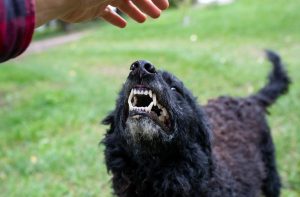The Role of Animal Control Laws in North Dakota Dog Bite Cases
 A dog bite can turn a regular day into a nightmare. One minute you’re walking down the street, the next—you’re bleeding, in pain, and asking yourself, “What just happened?”
A dog bite can turn a regular day into a nightmare. One minute you’re walking down the street, the next—you’re bleeding, in pain, and asking yourself, “What just happened?”
But after the fear fades and the bandages come off, you’re still left with questions. Who’s responsible? What are your rights? And—maybe most importantly—how do animal control laws in North Dakota affect your case?
That’s where a dog bite lawyer can help. You might be able to avoid legal trouble by familiarizing yourself with the local reporting requirements and regulations. Because in many cases, it’s not just about what happened—it’s about what the law says should have happened.
Let’s break that down.
What animal control laws mean for your case
North Dakota doesn’t have a statewide “dog bite statute” the way some states do. That means a lot depends on local ordinances and how the courts interpret negligence, responsibility, and owner liability.
This is where animal control laws step in.
Many cities and counties in North Dakota have their own rules about dogs, such as leash laws, dangerous dog designations, licensing requirements, and what happens when a dog attacks someone. These regulations help establish the standards for what’s considered “reasonable” behavior from a dog owner.
If a dog owner violates a local ordinance, that could be used as evidence of negligence. And if the dog has already been reported before, that could strengthen your case even more.
What counts as a “dangerous dog” in North Dakota?
It depends on the city.
In North Dakota, most cities and counties set their own standards for classifying a dog as “dangerous” or “vicious.” For example:
- Fargo: Under Fargo Municipal Code § 12-0117, a dog may be deemed dangerous if it has attacked or bitten a person or another animal without provocation. Owners of such dogs are required to meet specific conditions, such as registration and confinement requirements.
- Bismarck: According to Title 3, Chapter 3-03 of the Bismarck Code of Ordinances, a dog that has bitten or attacked a person or animal without provocation may be declared dangerous. Owners of such dogs are required to adhere to specific regulations, which may include secure confinement, muzzling when off the owner’s property, and maintaining liability insurance. Failure to comply with these regulations can result in penalties, including fines or removal of the animal.
- Grand Forks: Under Grand Forks City Code 11-0301, a dog may be classified as a dangerous animal if it bites, attacks, or injures a person or another domestic animal without provocation, or if it displays aggressive behavior such as unprovoked, terrorizing approaches. Owners of dangerous dogs are required to follow strict control measures under § 11-0303, including secure confinement in an enclosed structure with a locked top, muzzling and leashing when off-property, clear warning signage, and maintaining liability insurance of at least $100,000.
Even though Minot previously had a specific regulation targeting pit bulls (Section 7-34), that ordinance was repealed in 2022. Today, dangerous dog rules in Minot focus on individual behavior—not breed.
If a dog is officially classified as dangerous and the owner fails to follow the required safety measures, and someone gets hurt? That can be used as evidence of negligence. It’s not just about the bite—it’s about what the law expected the owner to do before it ever happened.
Why reporting the bite is crucial
A lot of people hesitate to report a dog bite. Maybe they know the owner. Maybe they’re worried about what might happen to the dog. Or maybe they think their injury isn’t “that bad.”
But not reporting the bite is one of the biggest mistakes you can make.
Here’s why:
- Reporting creates an official record. Animal control or the police will document the bite, including where it happened, who the dog belongs to, and what injuries occurred.
- It may trigger a dangerous dog investigation. If the dog has bitten before—or if this bite is serious enough—animal control may classify the dog as dangerous and impose new restrictions.
- It helps future victims. Your report could protect someone else down the line. If a dog is known to be aggressive, animal control can take steps before it happens again.
Bottom line? Report the bite. Even if it feels uncomfortable. It could play a major role in your case, and protect others, too.
Who’s liable in a dog bite case?
Since North Dakota doesn’t have a strict liability law for dog bites, most cases are based on negligence (except in some cases with known dangerous animals).
That means your dog bite lawyer will need to prove that the owner failed to act with reasonable care. For example:
- Did they let the dog roam freely in a public space?
- Did they ignore leash laws?
- Did they know the dog had a history of aggression?
- Did they violate any local animal control ordinances?
This can get complicated. But if a violation occurred, and it contributed to the bite, that’s powerful evidence of negligence.
It’s also worth noting that North Dakota follows a modified comparative fault rule (N.D. Cent. Code § 32-03.2-02). That means if you’re partially at fault—for example, if you provoked the dog—your compensation might be reduced. If you’re found to be 50% or more at fault, you could be barred from recovering anything at all.
What damages can you recover?
Every dog bite case is different, but in general, you may be entitled to compensation for:
- Medical bills (including future treatment)
- Lost wages or loss of earning capacity
- Pain and suffering
- Permanent scarring or disfigurement
- Emotional trauma
- Property damage (if your clothing or belongings were damaged in the attack)
In serious cases involving oppression, fraud, or actual malice, punitive damages may also apply. A dog bite lawyer can help calculate the full value of your claim and make sure no damage goes overlooked.
Common mistakes after a dog bite—and how to avoid them
Dog bite victims often make the same avoidable mistakes. Here are a few to watch out for:
- Not reporting the bite to animal control or the police.
- Failing to get medical attention right away—even for a small bite. Infections and complications are common.
- Talking to the dog owner’s insurance company without legal counsel.
- Posting about the incident on social media. (Yes, really. Insurers will)
- Assuming you don’t have a case because the dog never bit anyone before.
Even if the dog had no known history of aggression, the owner may still be liable. That’s why speaking to an attorney early is so important.
How a dog bite lawyer helps you navigate local laws
A seasoned attorney will do more than file paperwork. They will:
- Investigate the dog’s history, including any prior reports to animal control.
- Request records from the city or county about leash law violations or dangerous dog designations.
- Document your injuries and calculate your damages.
- Negotiate with the insurance company so you don’t get lowballed.
- Represent you in court, if needed.
The earlier you involve a lawyer, the better your odds of getting the full compensation you’re entitled to.
Don’t wait—North Dakota’s statute of limitations matters
In North Dakota, you have six years from the date of your dog bite to file a personal injury lawsuit, according to N.D. Cent. Code § 28-01-16. While that might sound like plenty of time, the truth is—waiting can hurt your case. Evidence fades. Witnesses forget. The sooner you act, the stronger your claim can be. Reaching out to a dog bite lawyer early means they can start gathering records, interviewing witnesses, and building your case while the details are still fresh.
If you’re looking for additional guidance on what to do after any kind of personal injury—especially incidents involving animals—check out this helpful blog post on what to do after a dog attack.
Protect your health and your legal rights after a dog bite
Dog bite claims in North Dakota aren’t always straightforward. Local ordinances, animal control reports, and state liability laws all come into play—and if you’re not familiar with them, it’s easy to get overwhelmed. But you don’t have to go through it alone.
At Larson Law Injury & Accident Lawyers, we help dog bite victims throughout North Dakota understand their rights and fight for the compensation they deserve. If you or a loved one has been injured by a dog—whether due to a negligent owner, a known dangerous animal, or a failure to follow local laws—we’re here to guide you through every step.
Dog bites can leave lasting scars, both physical and emotional. Don’t wait—contact Larson Law Injury & Accident Lawyers for a free consultation. Let us help you understand your legal options and get the justice you deserve. Call our Minot dog bite lawyers now or fill out our contact form to schedule a free consultation in Fargo, Minot, or Bismarck.

Mark Larson is a Certified Civil Trial Specialist and Certified Civil Pre-Trial Specialist focusing on personal injury, car accidents, wrongful death, and oil field claims. Since 1979, Larson Law has served the injured throughout North Dakota. Read more about Mark V. Larson.
